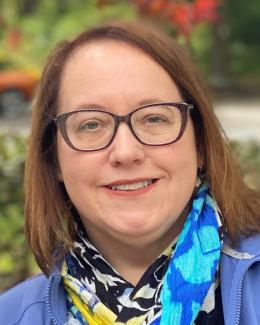Richard “Rick” Raines has been on the forefront of protecting critical communications systems from attack since before the term “cyber” was in vogue, and he is bringing that leadership to bear as he takes on the role of director for the Electrical and Electronics Systems Research Division (EESRD) at Oak Ridge National Laboratory (ORNL).
Raines, who has worked in the cybersecurity realm with the federal government and intelligence communities for more than 20 years, will leverage that expertise as ORNL expands its work to strengthen the nation’s electrical grid against both physical and cyberattack.
“What can an Electrical and Electronics Systems Research Division do in the cybersecurity space? A lot of things,” Raines said. “We can build better sensors to process and filter information on the operating environment, for one thing. The grid needs to be resilient, and carefully deployed advanced sensors will be key to monitoring.” He noted how the increase of electronic devices on the grid—everything from grid communications and controls that rely on the Internet to “smart” home appliances, known as the Internet of Things—makes the country’s electric infrastructure vulnerable to cyberintrusion.
“How do you minimize those opportunities for people who want to exploit vulnerabilities? One key way is to use sensors—to monitor and sense when something is happening in the system, and to move toward self-healing types of devices and networks. Those are things I see this division supporting in the cybersecurity realm,” Raines said.
However, EESRD is much more than its work in grid security. “We have a lot of great work going on in biometrics, power engineering technologies, RF signals, controls, and other areas,” Raines added.
Raines said his first 100 days in EESRD will be spent “gaining a deeper understanding of the division. I want to get to know the talent in each group and each researcher and explore new opportunities for R&D, bringing together staff not just in our division internally, but in connecting with partners across the lab and across the country in industry, academia, and government to work on challenges that are national lab–worthy. We should be pushing the envelope in science and technology—figuring out the art of the possible and pushing beyond that.”
Raines joined ORNL in 2013 and most recently directed the Cybersecurity and Data Analytics Initiative for the Global Security Directorate, in addition to leading ORNL’s internally funded research and development program for energy system cybersecurity.
He previously held leadership positions at the Air Force Institute of Technology at Wright-Patterson Air Force Base, including as founding director of the Air Force Center for Cyberspace Research and as cyber transformation chair for the Department of Defense.
Building a center of excellence for cybersecurity education, outreach
He counts the establishment of the Air Force Center as a key success in his career; it was designated by the Secretary of the Air Force as an Air Force Cyberspace Technical Center of Excellence in 2008. The program began around 2000 when Raines recognized the need for greater information assurance. “That was before the term cyber was even used,” he said. “We started from scratch and built an education and outreach center for cybersecurity from the ground up, earning the respect of senior leaders for our cutting-edge work.”
Raines has spent much of his career in the military. He grew up in the small town of Madison, Florida, where he excelled in math in high school. After graduation, he entered the Army. “I had a cousin who worked at the Army induction center in Jacksonville Florida. One of his duties was matching peoples’ aptitudes with needed job openings. I told him I was interested in electronics and computers. So he set me up with an engineering specialty,” Raines said. “My cousin set me up with one of the best electronic schools the Army had to offer, and gave me great advice in that if I went into communications engineering, I’d never be without a job. He was right, as I’ve had lots of great opportunities since beginning work on radar and associated computer systems in Stuttgart, Germany.”
After his Army enlistment period, he enrolled at Florida State University, where he earned his undergraduate degree in electrical engineering under the GI Bill. During that time, he also worked as an engineer in the Physics Department, designing and making circuit boards and installing networks. Upon graduation, he was commissioned as an officer in the Air Force.
Raines later earned a master’s degree in computer engineering at the Air Force Institute of Technology (AFIT), and a promotion to the rank of Major. After earning his PhD in electrical engineering at Virginia Polytechnic Institute, he became a professor at AFIT, a position he held until 2013 when he came to ORNL.
“I’ve been here for about four-and-a-half years now, and I’m still just scratching the surface regarding the great work that goes on here. I’m eager to help match the capabilities in our division with others at the lab to create stronger R&D teams,” Raines said.
The new director said he is also looking forward to a role as mentor in the division. “Seeing those you work with succeed provides a great deal of satisfaction. We have lots of young talent here, and I want to help shape their careers and boost their success,” he added. Raines also said he’d like to deepen ORNL’s relationship with community colleges to help train technicians needed for the electronics workforce. He currently holds a joint faculty appointment in electrical engineering at the University of Tennessee.
“The capabilities we have here at ORNL such as our computational resources are second to none. We have fantastic lab spaces and people who are very passionate about what they’re doing. Our quality of life here in Tennessee is great, too. If you enjoy getting outdoors, there’s a lot to offer,” said Raines, who enjoys golfing in his time away from the lab.




